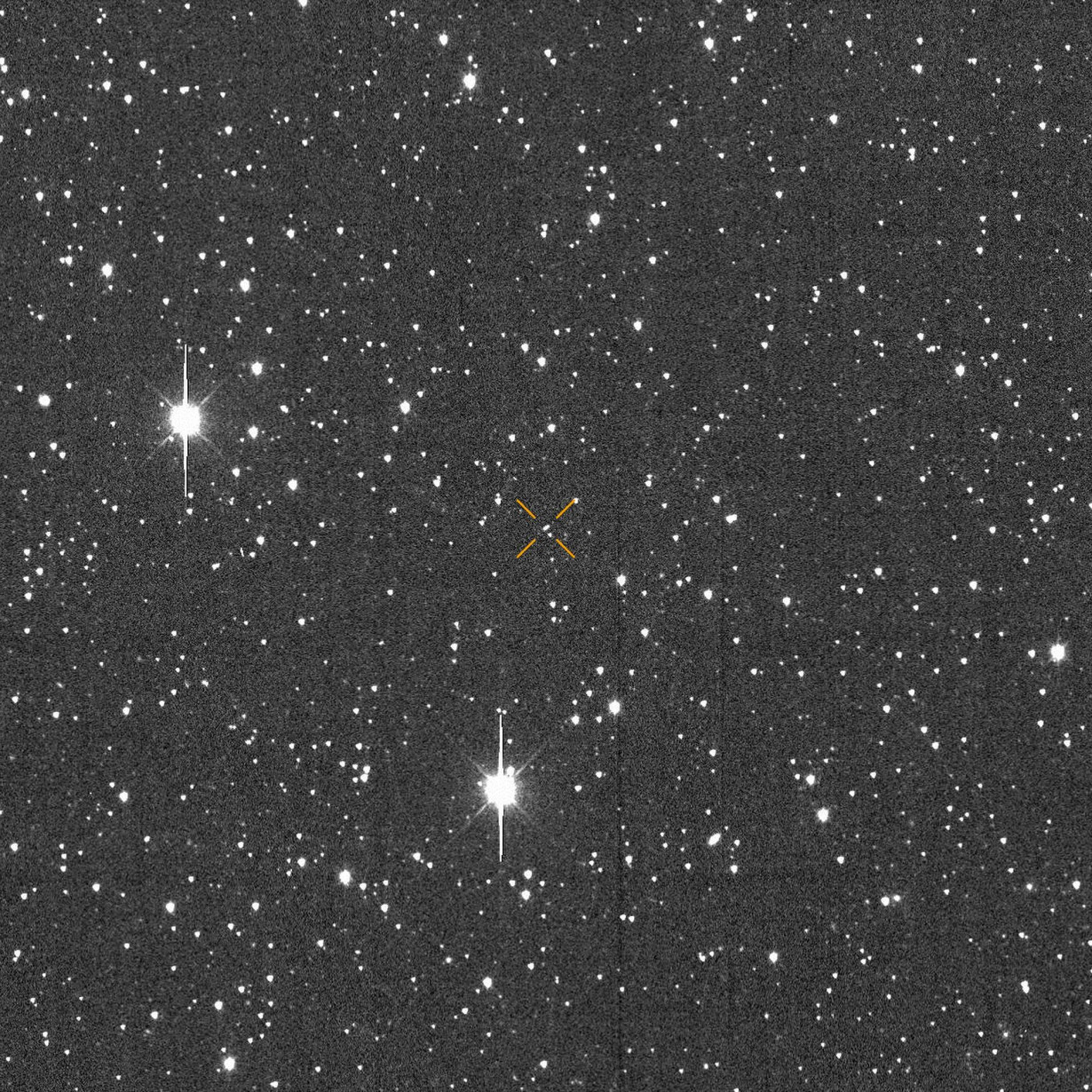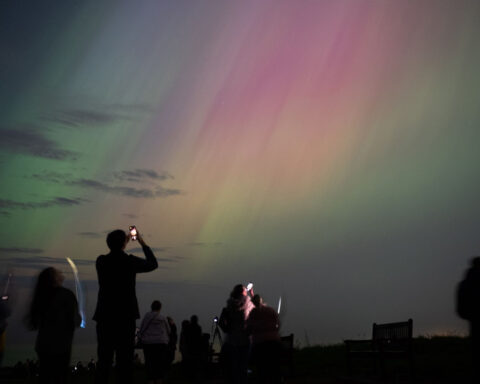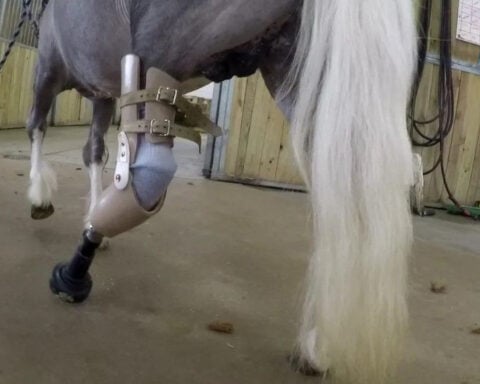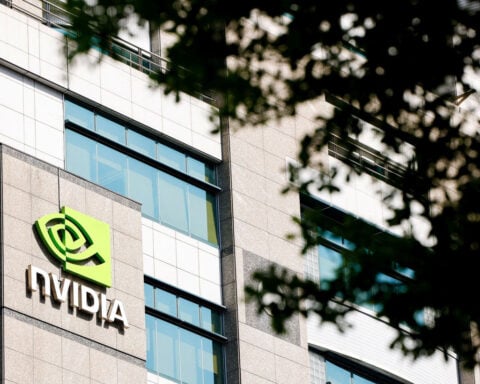(CNN) — Asteroid 2024 YR4, deemed the riskiest asteroid on record last week, now has nearly a zero percent chance of impacting Earth in 2032, according to NASA and the European Space Agency.
NASA estimates that the space rock has a 0.0017% chance of hitting Earth in December 2032, while the ESA has a similar risk assessment of 0.002%.
That’s a 1 in 59,000 possibility of impact, meaning there is a 99.9983% chance that the asteroid will safely zip by Earth in seven years, according to NASA. The agency also shared that the new data suggested that the asteroid had a 1.7% chance of hitting the moon, but those slight odds of impact do not pose a risk to Earth.
“When first discovered, asteroid 2024 YR4 had a very small, but notable chance of impacting our planet in 2032,” the agency shared on Monday.
“As observations of the asteroid continued to be submitted to the Minor Planet Center, experts at NASA Jet Propulsion Laboratory’s Center for Near-Earth Object Studies were able to calculate more precise models of the asteroid’s trajectory and now have found there is no significant potential for this asteroid to impact our planet for the next century. The latest observations have further reduced the uncertainty of its future trajectory, and the range of possible locations the asteroid could be on Dec. 22, 2032, has moved farther away from the Earth.”
Over the weekend, the asteroid also dropped to a ranking of 0 out of 10 on the Torino Impact Hazard Scale, a tool for categorizing potential collisions of space objects with Earth. The ranking indicates “the likelihood of a collision is zero, or is so low as to be effectively zero. Also applies to small objects such as meteors and bodies that burn up in the atmosphere as well as infrequent meteorite falls that rarely cause damage.”
Asteroid 2024 YR4, detected by telescopes on December 27, 2024, is estimated to be 131 to 295 feet (40 to 90 meters) wide, comparable to a large building, and could cause local devastation if it were to collide with our planet.
The quick de-escalation of the asteroid’s risk assessment is thanks to “unsung, meticulous work by astronomers” who conducted a steady stream of follow-up observations of the space rock using telescopes across the globe, said Richard Binzel, inventor of the Torino Scale. Binzel is a professor of planetary sciences, joint professor of aerospace engineering and MacVicar Faculty Fellow at the Massachusetts Institute of Technology.
“I’m pleasantly surprised that we could reduce the probability numbers so quickly,” Binzel said. “It would not have done anyone any good to have this probability hang around for a long time because it was going to go to zero. The reason I say it was going to go to zero is at the end of the day, the probability is either zero and it misses you, or it’s one and it hits you. Any number in between is just the space of your uncertainty. We didn’t want us to have to sit in that time and space of uncertainty for months and months.”
From record-breaking to nonthreatening
Early last week, 2024 YR4 briefly broke a record once reached by the asteroid Apophis after it was first spotted in 2004.
At its peak threat level, 2024 YR4 reached a 3 on the Torino Scale and had an estimated 3.1% chance of hitting Earth in 2032, according to NASA. The ESA’s observations reached a peak of a 2.8% risk.
The narrow difference was due to the two agencies’ use of different tools for determining the asteroid’s orbit and modeling its potential impact. But both percentages rose above the 2.7% chance of collision once associated with Apophis, making 2024 YR4 the most significant space rock to be spotted within the past two decades.
However, as with Apophis, astronomers expected the risk for 2024 YR4 to spike and then fall to zero as they obtained more observational data to reduce uncertainties about the asteroid’s path.
Measuring 1,148 feet (350 meters) in diameter, Apophis was previously considered one of the most hazardous asteroids, with a chance of hitting our planet and reaching a 4 out of 10 on the Torino Scale. The rating meant that the asteroid merited astronomers’ attention and tracking. Apophis reached a 4 because it was a larger object capable of regional damage, while 2024 YR4 garnered a 3 because it would cause local damage, Binzel said.
But like 2024 YR4, Apophis also quickly dropped from a 4 to a 0 on the Torino Scale after astronomers spotted archival observations of the asteroid that more precisely clarified its orbit. While Apophis is still set to make a close flyby of Earth in 2029 that will be studied by multiple spacecraft, it poses no risk to Earth within this century.
The biggest obstacle astronomers face when trying to determine the risk posed by newly discovered asteroids is calculating the unknowns. In the case of 2024 YR4, that includes the space rock’s size as well as its orbit.
Observations taken during the dark skies necessary for ground-based telescopes to track faint, small asteroids after February’s full moon, which shone brightly in the night sky on February 12, helped astronomers quickly decrease the risk assessment for 2024 YR4.
Key telescopes have included the Canada-France-Hawaii Telescope, the Subaru Telescope and Haleakala-Faulkes Telescope North, all located in the Hawaiian Islands, as well as New Mexico’s Magdalena Ridge Observatory, the Gemini South Observatory in the Chilean Andes, Arizona’s Lowell Discovery Telescope and the Nordic Optical Telescope in the Canary Islands.
“The atmosphere above Maunakea tends to be very stable, and it enables telescopes to produce very sharp images, sharper than most other observatory locations,” said David Tholen, an astronomer at the University of Hawaii’s Institute for Astronomy, in a statement.
The likelihood of 2024 YR4’s impact has dropped just in time. Astronomers were concerned because the space rock’s trajectory, carrying it away from Earth in a straight line, meant the asteroid would be out of reach of ground-based telescopes in April and wouldn’t reappear until June 2028.
However, astronomers plan to remain vigilant in observing the space rock to ensure that 2024 YR4 poses no risk, and the James Webb Space Telescope is expected to observe the asteroid in early March to pin down more details about its orbit and exact size.
The-CNN-Wire
™ & © 2025 Cable News Network, Inc., a Warner Bros. Discovery Company. All rights reserved.

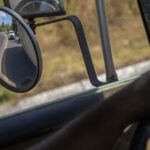 Trump has begun another trade war. Here's a timeline of how we got here
Trump has begun another trade war. Here's a timeline of how we got here
 Canada's leader laments lost friendship with US in town that sheltered stranded Americans after 9/11
Canada's leader laments lost friendship with US in town that sheltered stranded Americans after 9/11
 Chinese EV giant BYD's fourth-quarter profit leaps 73%
Chinese EV giant BYD's fourth-quarter profit leaps 73%
 You're an American in another land? Prepare to talk about the why and how of Trump 2.0
You're an American in another land? Prepare to talk about the why and how of Trump 2.0
 Chalk talk: Star power, top teams and No. 5 seeds headline the women's March Madness Sweet 16
Chalk talk: Star power, top teams and No. 5 seeds headline the women's March Madness Sweet 16
 Purdue returns to Sweet 16 with 76-62 win over McNeese in March Madness
Purdue returns to Sweet 16 with 76-62 win over McNeese in March Madness
